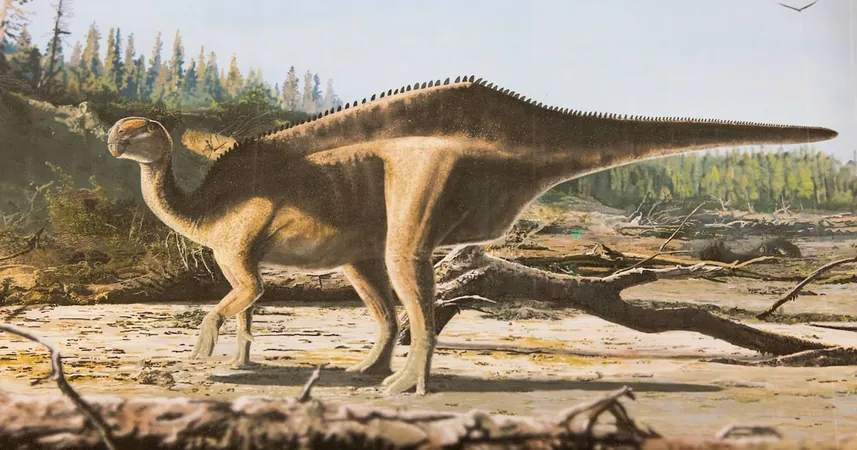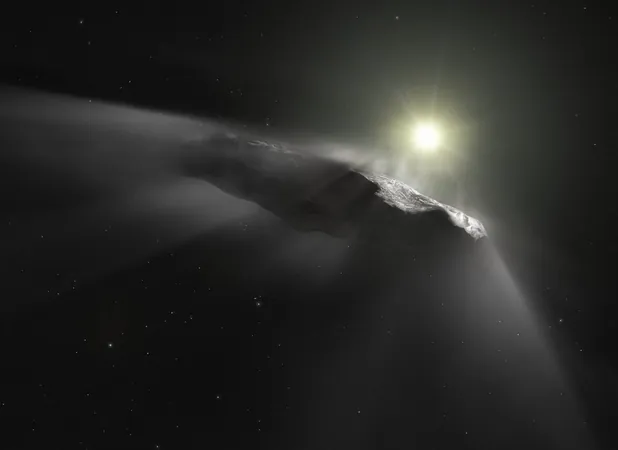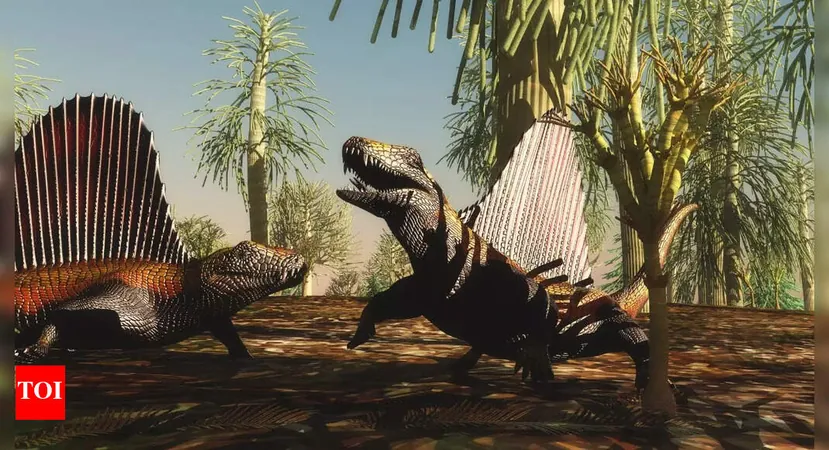
Unveiling the Istiorachis macarthurae: The Dinosaur with a Stunning Sail-Like Back!
2025-08-24
Author: William
A New Discovery from the Depths of Time!
Paleontologists at the Natural History Museum in London have stumbled upon a remarkable new dinosaur species, known as the Istiorachis macarthurae, featuring a captivating sail-like structure adorning its back. This jaw-dropping find was revealed on Friday and harkens back over 120 million years to the lush landscapes of the Isle of Wight, a charming island off England's southern coast.
Named in Honor of a Record-Breaking Sailor
This fascinating creature, named after the legendary British sailor Ellen MacArthur, was unearthed among its herbivorous cousins, the Iguanodon. These dinosaurs thrived during the Late Jurassic to Early Cretaceous periods, making them a significant chapter in the story of prehistoric life.
What’s Up With That Sail?
While scientists are still piecing together the exact purpose of its sail-like feature, it’s believed to have played a crucial role in attracting mates and facilitating species recognition. This extraordinary structure could be the key to understanding social interactions within the species!
From Old Bones to New Insights
Originally thought to belong to a known iguanodontian species, the bones were re-examined by retired doctor Jeremy Lockwood during his PhD research. His keen eye caught the unusually long neural spines, a striking characteristic that led to the realization that this was, in fact, a new species.
Physical Characteristics and Significance
Standing at approximately 2 metres tall and weighing around 1,000 kilograms, the Istiorachis macarthurae's impressive sail is not just for show. Lockwood suggests that, as iguanodontians evolved from smaller bipedal beings into larger, more quadrupedal creatures, stronger spines were essential for muscle attachment and support.
A Sail with a Purpose?
Lockwood challenges the theory that the sail could help with temperature regulation. Instead, he suggests that the sail likely served a critical role in mating displays—similar to the flamboyant tail of a male peacock. He stated, "When a characteristic is exaggerated beyond its practical function in living animals, it is invariably due to the evolutionary pressure to attract a mate. Istiorachis' sail seems to be another example of that."
What Lies Ahead?
This exciting discovery highlights the biodiversity of the Early Cretaceous on the Isle of Wight, suggesting there are many more enigmatic species waiting to be uncovered. With advances in paleontological techniques, who knows what other secrets the past might reveal in the years to come?









 Brasil (PT)
Brasil (PT)
 Canada (EN)
Canada (EN)
 Chile (ES)
Chile (ES)
 Česko (CS)
Česko (CS)
 대한민국 (KO)
대한민국 (KO)
 España (ES)
España (ES)
 France (FR)
France (FR)
 Hong Kong (EN)
Hong Kong (EN)
 Italia (IT)
Italia (IT)
 日本 (JA)
日本 (JA)
 Magyarország (HU)
Magyarország (HU)
 Norge (NO)
Norge (NO)
 Polska (PL)
Polska (PL)
 Schweiz (DE)
Schweiz (DE)
 Singapore (EN)
Singapore (EN)
 Sverige (SV)
Sverige (SV)
 Suomi (FI)
Suomi (FI)
 Türkiye (TR)
Türkiye (TR)
 الإمارات العربية المتحدة (AR)
الإمارات العربية المتحدة (AR)